San Francisco — birthplace of Levi’s, Ben Davis, and Gap — has a long history with pants. But that history, which over the past decade has unleashed a plague of straight-leg chinos on the world, has reached a turning point.
A new era of huge pants is upon us.
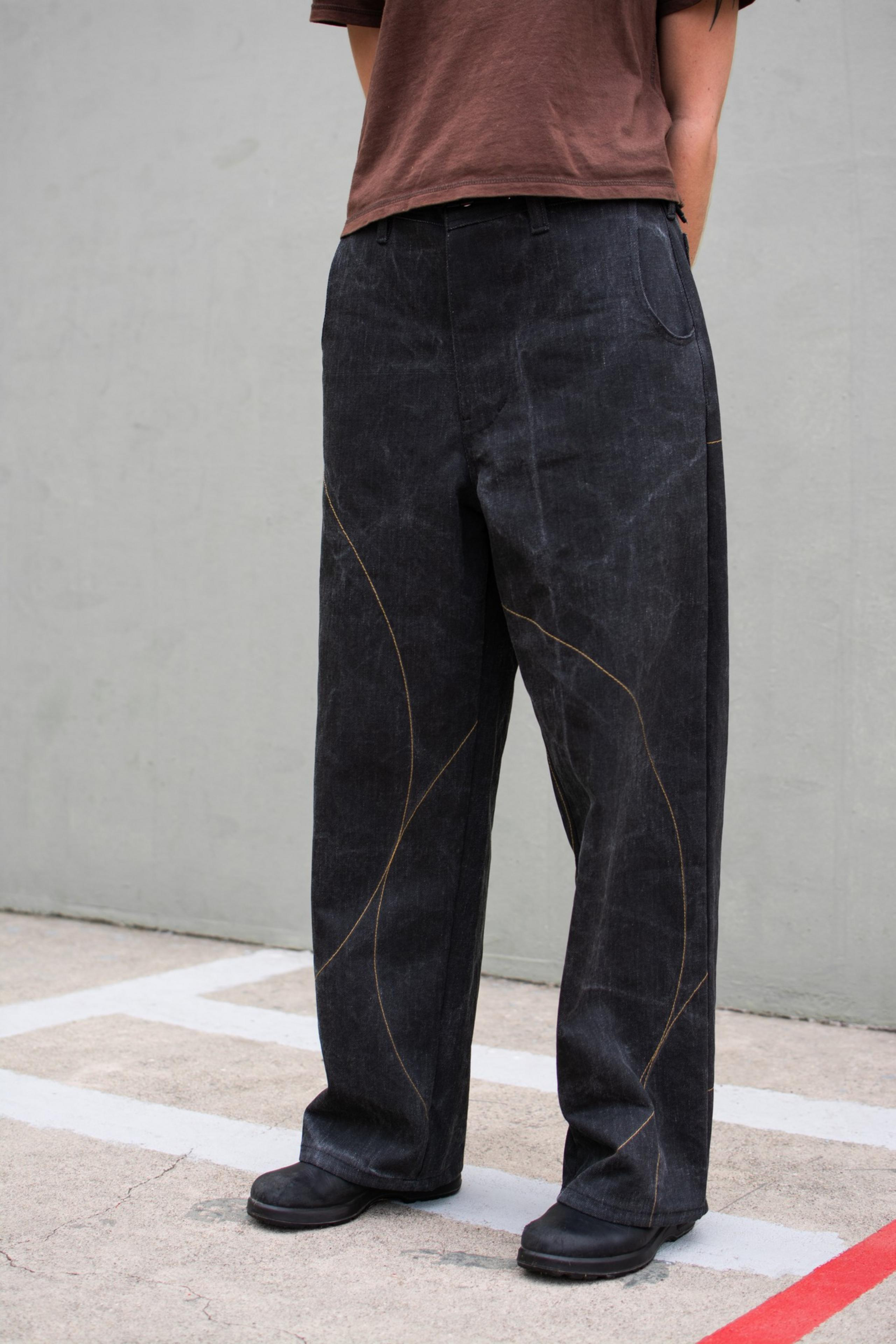
A handful of young, independent designers are helping to usher in the return of large-silhouetted trousers, drawing on the Bay Area’s sartorial legacy in the process.
Almost all of them work full-time jobs and treat their pants pursuits as side hustles. Some attend shop parties in SF and Oakland, echoing the vinyl listening sessions that went down at the first Gap location when it opened on Ocean Avenue in 1969. And all are embracing generous leggage.
Keith Hanlon, 36, only learned to sew in 2019. He started making pants for himself, and then his friends asked for pairs of their own. Now he’s the proprietor of the tiny Keith H Pants label. His signature five-pocket jeans feature a Japanese-style magnetic button fly and elastic waistband (one local skater calls them “Japants”), and were sold this July at Rising Star Laundry, the buzzy Cole Valley boutique.
Hanlon is among a new crop of Bay Area pants designers who are competing not only with fast fashion and vintage retailers, but also with more established local artisans like Evan Kinori, whose Mission boutique has become a cult obsession with pantheads.
Not that these designers would ever say they’re competing with Kinori, or even with each other. These projects are more about expression than commerce, they note. But at least one small-time pantsmaker does support himself with his business alone.
Sausalito-based Rix Cannell started his one-man operation, Hendrix Park (opens in new tab), in 2024, and is gaining attention for its elevated military fatigues, lauded for their vintage feel and straight-leg fit. While most fatigues found at thrift stores are sloppily constructed and mass-produced, Hendrix Park offers a version with fine detailing, as well as high-grade materials and fabrics sourced from the world’s most historic workwear suppliers.
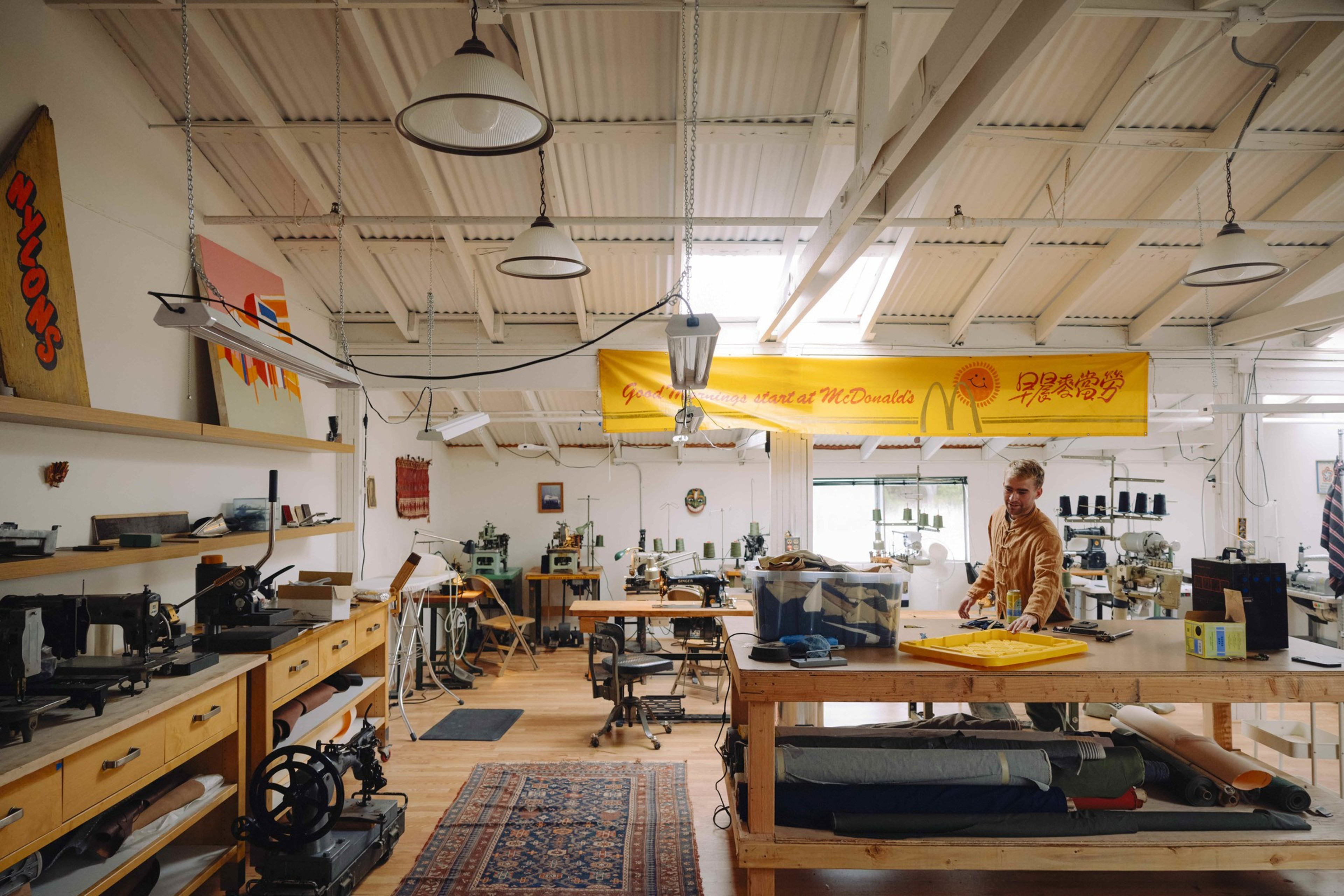
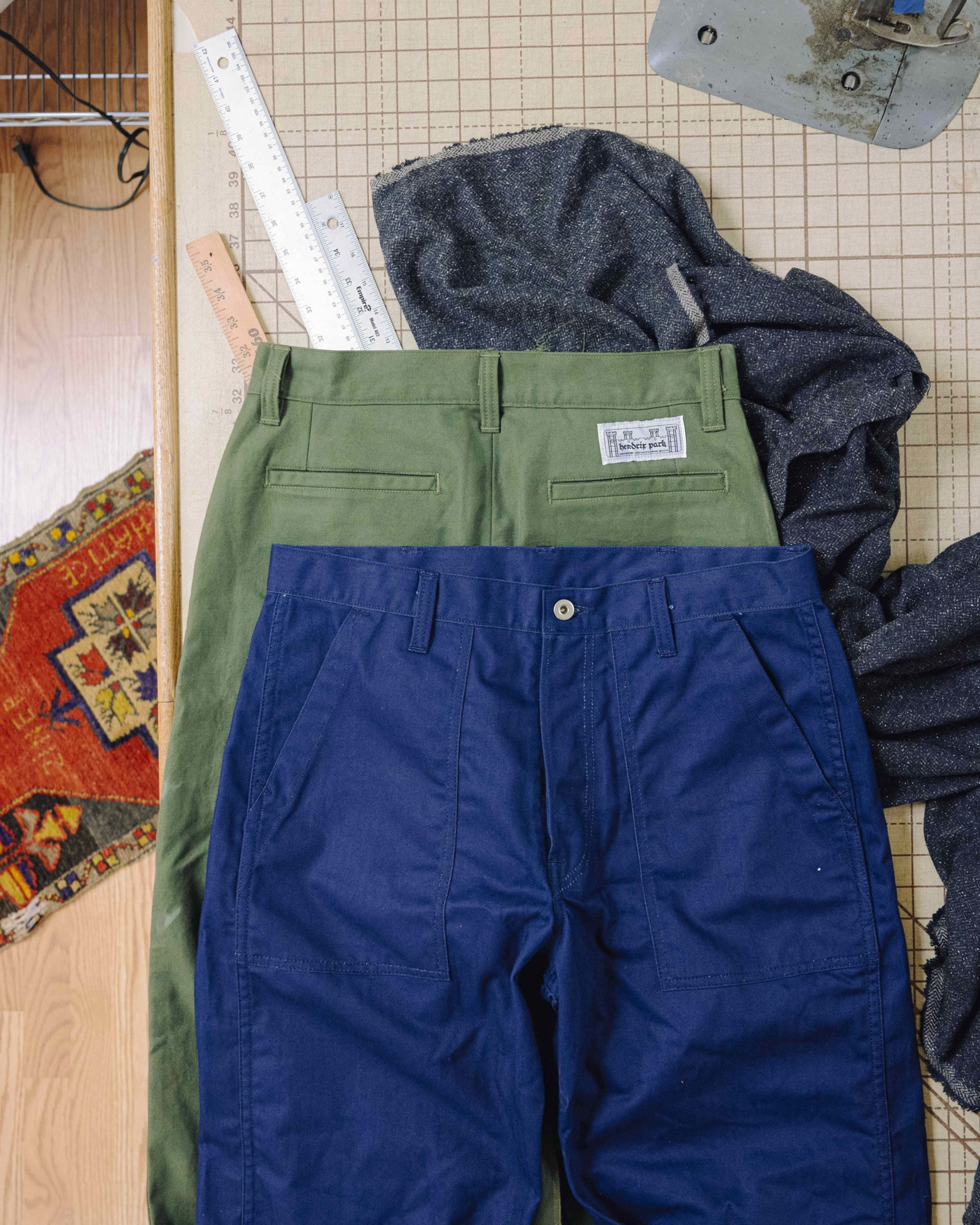

His selvedge denim comes from the same mill in North Carolina that Levi’s used for 501 jeans before moving their operations overseas. His navy moleskin comes from the Italian city from which jeans derive their name (opens in new tab).
His signature olive-green fatigues use a cotton sateen milled in a small 108-year-old textile factory in the Okayama prefecture, where Japan’s denim industry was born. What’s more, Cannell uses nine vintage sewing machines to assemble the pants in his industrial studio on Sausalito’s waterfront.
He says this attention to materials and craft justifies the $240 price point.
“I’m not reinventing the wheel in any way,” he said. “But there are a lot of people who are interested in buying a product that’s not too far away. Half of the people who I’ve sold pants to come and pick them up, and they get to meet all the machines that made their shit.”

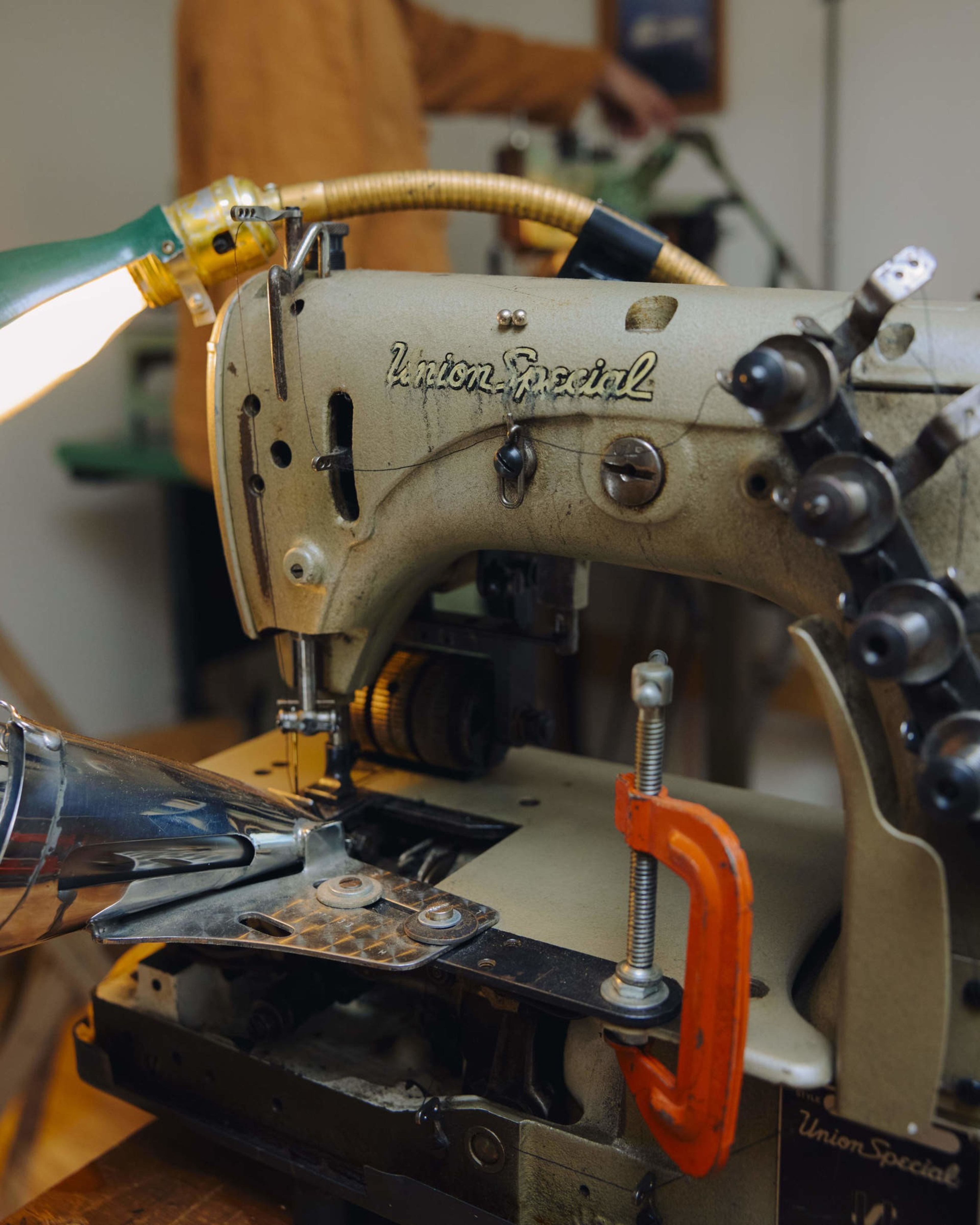
Berkeley-based menswear store Standard & Strange helped herald the 2010s pants revitalization in the Bay Area, alongside brands like Self Edge in the Mission. When the retailer put up a limited run of Hendrix Park’s indigo fatigues (opens in new tab) this summer, they sold out in 10 minutes.
At Wes Allen’s Oakland boutique Understory (opens in new tab), clothing hobbyists can meet the people making the clothes they buy at the shop’s regular parties in Temescal Alley. The customers seeking these items out range from artists, barbers, and writers to tech workers who have decided to spend their ample cash on a clothing hobby.
A sizable chunk of the designers and customers are skateboarders — a group naturally attuned to street style and clothes that accommodate movement. One of them is designer Blake Edward, who started making clothes in 2021 and launched his brand in 2023. “I was constantly looking for something that would feel good when I’m skating or biking,” he said.
He’d find good pants secondhand, but with vintage, you can’t just go online and order three more pairs. So he took matters into his own hands. Like Hanlon, he honed his sewing skills during the 2020 lockdown. And also like Hanlon, he has no plans to quit his day job. (Edward works full-time at a pharmacy; Hanlon works in healthcare administration.)
Edward and Cannell both made pannier bags for bicycles before they made pants. Cannell marveled at the similarity of their brands’ evolutions, even though they’ve never met. Biologists call this phenomenon convergent evolution, except instead of disparate species evolving into crabs (opens in new tab), it’s disparate artisans evolving into dudes making fancy pants for skaters and aesthetes.
Sam Poole, who has been dealing vintage clothing in the Bay Area for nearly a decade, said the desire for a larger fit for pants has eaten into the vintage market. “There are people who switched from buying vintage to buying new pants because they wanted a wider leg fit that didn’t really exist in ‘true vintage,’ or the vintage pants they ideally want are too expensive,” he added. “Or they want the modern wide-leg fit that is cut slightly different from ’90s and 2000s wide-leg pants.”
But for Nick DiPastena and Tom Wall of Post Jeans (opens in new tab), the past is essential. DiPastena, who lives in San Francisco and works in tech, traveled to an Oakland scrapyard to salvage seat leather from early 1990s Lexus cars, using the leather to make tags for the waistbands of the brand’s early runs of jeans.
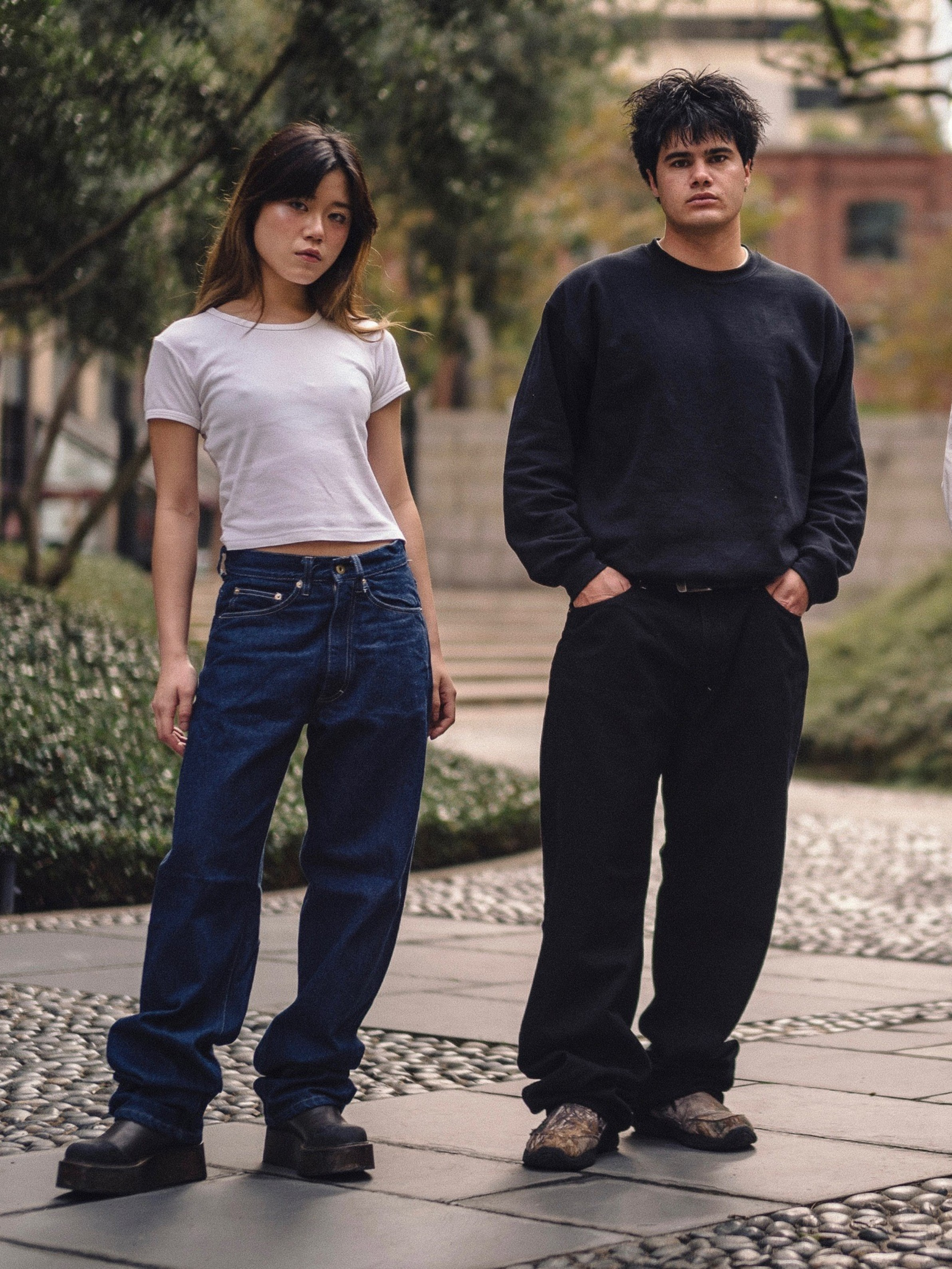
The idea is that the pants represent the same quiet, sophisticated luxury — and comparably affordable price point — that Lexus offered when it launched. This narrative has proved successful. Rising Star Laundry’s owners report that Post Jeans fly off the shelves.
Allen, who also stocks the brand at his shop, said the pants’ success wasn’t surprising: “A lot of times, what ends up selling a piece of clothing is the story behind it.”
